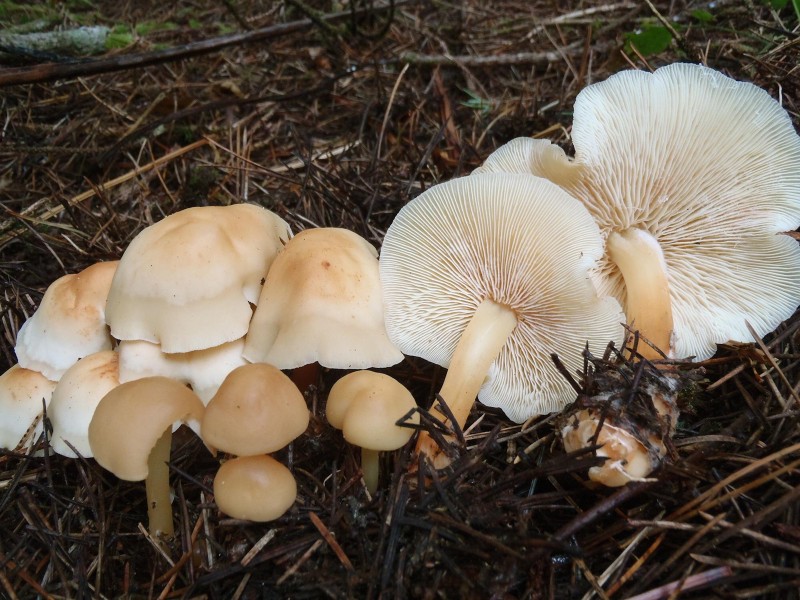Collybia dryophylla (Also called Gymnopus dryophilus)
posted by Don 6/19/12 --- Scroll Down to see the Discussion

DON: I found this beautiful group of mushrooms yesterday at
the beach in Long Beach, Wa.
It has white spores, and I thought it might be a Melanoleuca.
Any thoughts from the group?
I think it was actually a little warmer colored in person than the photo showed....
leaning towards apricot tones.
and it was growing in a pine forest in the duff.
Sava: Nice photo, Don!
I doubt it's a Melanoleuca (no striations on the stem, caps not flat till late).
More likely a "Collybia". Perhaps Rhodocollybia maculata?
Do you still have the mushrooms?
You can confirm or eliminate Melanoleuca by looking at the spores only (warty or not).
Judy:
Beautiful photo!!! You show the moist,
nearly buttery texture of the young caps
so well.
Sava is right about the cap shape,
and stem characters for not being Melanoleuca,
tho I can see why you would think it.
Melanoleuca has a dryer cap surface too.
I'm looking at the relative size of the specimens in relation to the conifer needles,
and Collybia dryophylla comes to mind.
It is a smaller Collybia/Gymnopus species, has very closely spaced gills,
buttery/waxy cap surface, and grows in groups in conifer woodlands.
The shape and coloration of the stem fits closely too.
The cap color can be variable from light to dark,
so not a great feature to depend upon.
So that is my vote.
Mike P: Gymnopus dryophilus was my thought, too.
In this area, we also have (apparently -- I've not seen it)
G. confluens, similar but with a pubescent stem.
The attachment shows the characters I used in MatchMaker to find this.
However, I knew the species, as Collybia dryophila, from New England,
where it's often found under oaks -- "dryophila" means "oak loving".

Judy: G. confluens not only has a pubescent stipe,
but it (the stipe) is thinner, tougher; the caps tend to be smaller,
and there is an overall lavenderish tone to the mushrooms.
It acts almost like a marasmius by shriveling when dry then reviving with moisture.
I find it mostly in the coastal forests.


